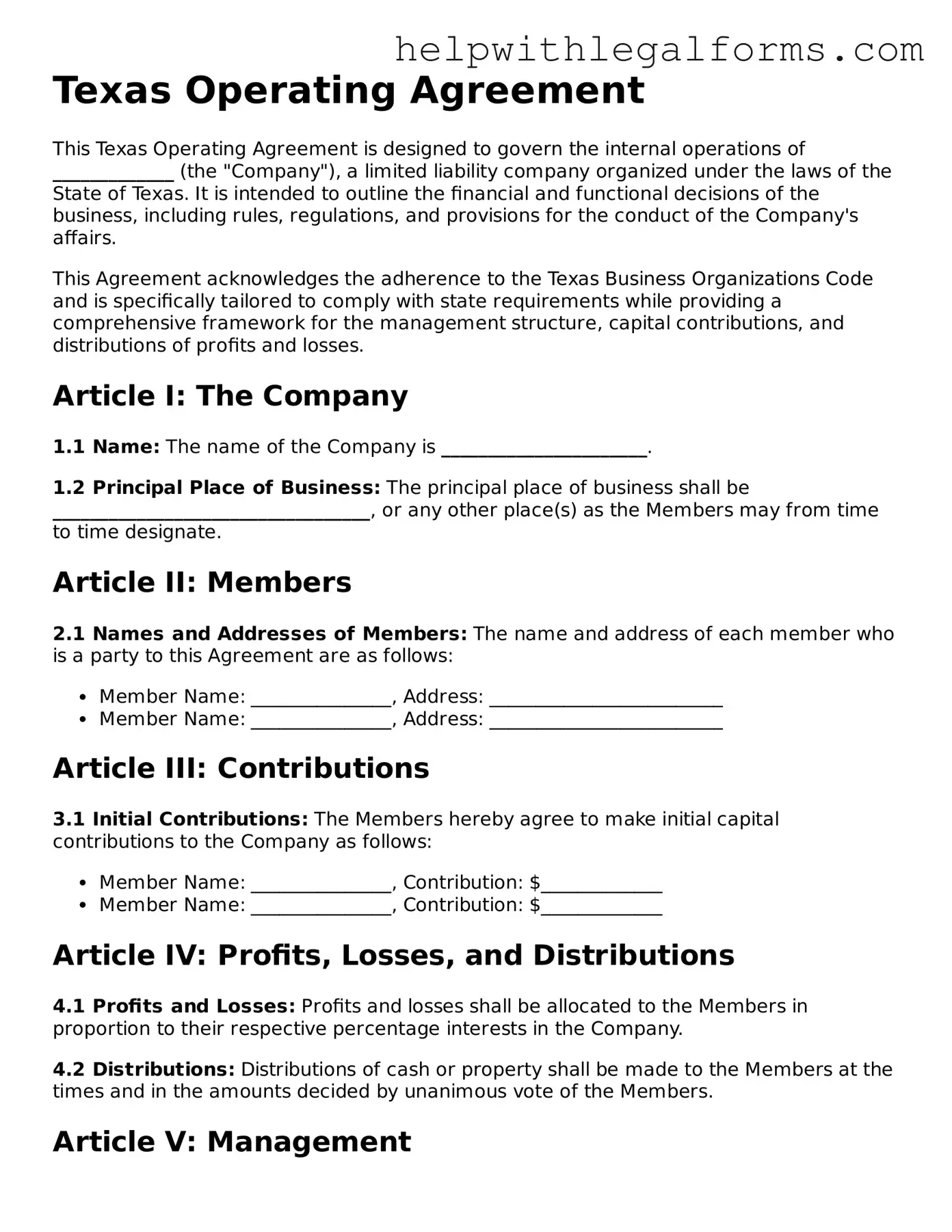Texas Operating Agreement
This Texas Operating Agreement is designed to govern the internal operations of _____________ (the "Company"), a limited liability company organized under the laws of the State of Texas. It is intended to outline the financial and functional decisions of the business, including rules, regulations, and provisions for the conduct of the Company's affairs.
This Agreement acknowledges the adherence to the Texas Business Organizations Code and is specifically tailored to comply with state requirements while providing a comprehensive framework for the management structure, capital contributions, and distributions of profits and losses.
Article I: The Company
1.1 Name: The name of the Company is ______________________.
1.2 Principal Place of Business: The principal place of business shall be __________________________________, or any other place(s) as the Members may from time to time designate.
Article II: Members
2.1 Names and Addresses of Members: The name and address of each member who is a party to this Agreement are as follows:
- Member Name: _______________, Address: _________________________
- Member Name: _______________, Address: _________________________
Article III: Contributions
3.1 Initial Contributions: The Members hereby agree to make initial capital contributions to the Company as follows:
- Member Name: _______________, Contribution: $_____________
- Member Name: _______________, Contribution: $_____________
Article IV: Profits, Losses, and Distributions
4.1 Profits and Losses: Profits and losses shall be allocated to the Members in proportion to their respective percentage interests in the Company.
4.2 Distributions: Distributions of cash or property shall be made to the Members at the times and in the amounts decided by unanimous vote of the Members.
Article V: Management
5.1 Management of the Company: The Company shall be managed by its Members. Each Member shall have authority and control over the business to the extent of their ownership interest.
Article VI: Miscellaneous
6.1 Amendments: This Operating Agreement can only be amended with the written consent of all the Members.
6.2 Governing Law: This Agreement shall be governed by and construed in accordance with the laws of the State of Texas.
Signatures
In witness whereof, the undersigned have executed this Operating Agreement as of the ___ day of ___________, 20__.
- Member Name: _______________ Signature: ________________________
- Member Name: _______________ Signature: ________________________
